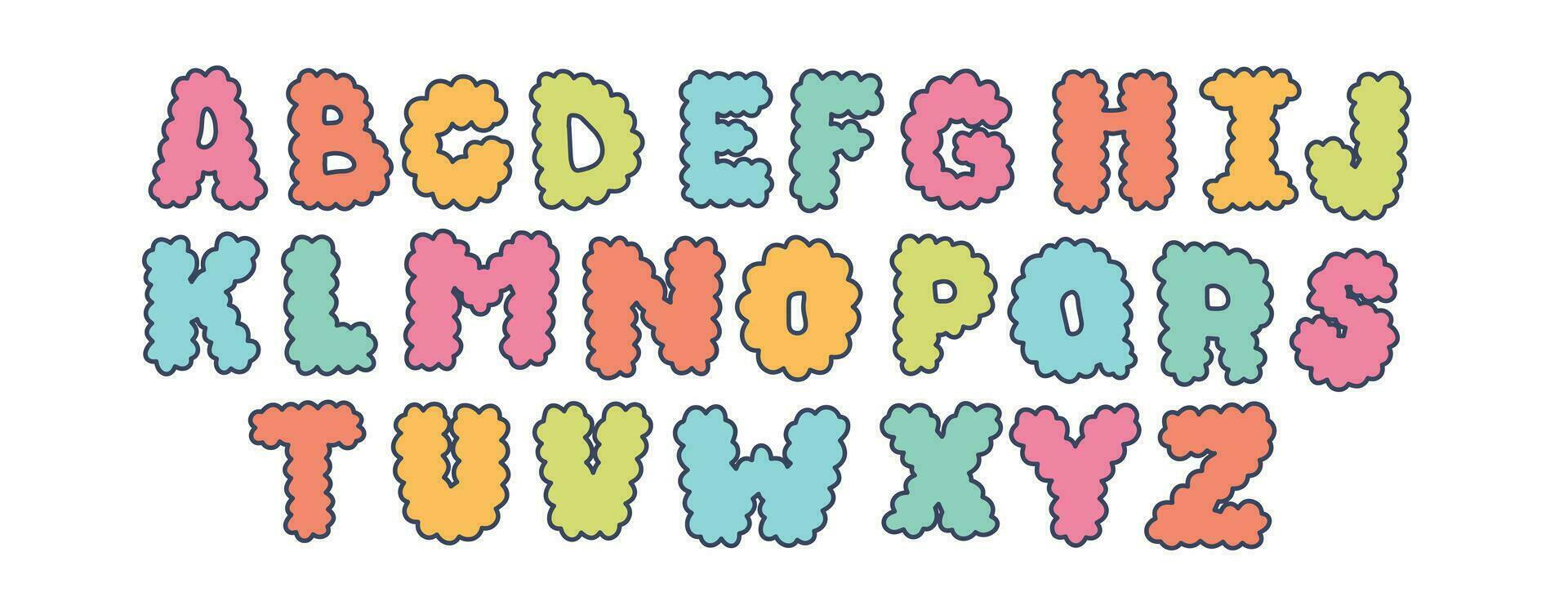Introduction
Bubble Font Typography plays an essential role in design, setting the tone and communicating messages with visual appeal. One type of typography that stands out for its playful and attention-grabbing qualities is the bubble font. Recognized for its rounded, inflated, and friendly appearance, bubble fonts add personality and charm to any creative project. Whether it’s for children’s content, advertisements, or social media campaigns, bubble fonts stand out for their unique and fun style. This article delves deep into what bubble fonts are, their applications, how to choose the right one, and even how to create a custom bubble font.
1. What is a Bubble Font?
A bubble font is a style of typography characterized by round, soft, and inflated shapes that give the text a playful, three-dimensional appearance. These fonts often evoke feelings of fun and lightheartedness, making them a favorite choice for projects that need to be engaging and visually appealing.
The origins of bubble fonts can be traced back to the pop art movement of the 1950s and 1960s, which embraced bright colors, bold lines, and a sense of whimsy. Over time, bubble fonts evolved into a versatile design tool, seen in everything from comic book lettering to advertisements. Today, bubble fonts are commonly used in children’s books, cartoons, and social media graphics, offering a bold, friendly look that catches the viewer’s eye.
One of the key features of bubble fonts is their versatility. They come in various styles, ranging from soft, rounded edges to bold, exaggerated curves. These fonts can be customized with shadows, gradients, and outlines to give them a more dynamic and three-dimensional feel, making them even more impactful in design.
2. Applications of Bubble Fonts
Bubble fonts are incredibly versatile and can be used across a variety of design mediums. Below are some common applications where bubble fonts shine:
In Graphic Design
Bubble fonts are often used in graphic design for their bold, attention-grabbing qualities. They can be seen in logos, posters, flyers, and advertisements. Their rounded shapes make them perfect for evoking fun, youthful energy. Whether you’re designing a product for kids or promoting a playful event, bubble fonts can make your message stand out.
For instance, a candy brand might use bubble fonts in its logo to convey the sweet, indulgent nature of its product. Similarly, a theme park might use bubble fonts on promotional materials to capture the excitement and joy associated with the experience.
In Social Media
Social media is another area where bubble fonts are commonly used. Platforms like Instagram, Facebook, and Twitter are filled with images, text, and visual content, making it crucial for posts to stand out. Using a bubble font in captions, promotional graphics, or stories can help draw attention and increase engagement.
An example of bubble fonts being used effectively on social media is influencer marketing. Influencers often use these playful fonts in their promotional posts to align with the fun, energetic image they present to their followers. This creates a more cohesive brand aesthetic and draws more interaction from their audience.
In Branding
Incorporating bubble fonts into branding strategies can significantly impact how a company is perceived. Brands looking to communicate a fun, approachable, or youthful image may benefit from using bubble fonts in their marketing materials. This type of typography instantly conveys playfulness, creativity, and friendliness, which can help build a stronger connection with target audiences.
Think of how major brands like Coca-Cola and Pepsi have used rounded, bubbly fonts in their logos over the years. These designs are instantly recognizable and evoke a sense of nostalgia and joy, which is exactly what bubble fonts aim to do.
3. Choosing the Right Bubble Font for Your Project
Not all bubble fonts are created equal, and choosing the right one for your project can significantly affect how your design is perceived. When selecting a bubble font, consider the tone, message, and overall feel of the project you’re working on. Here are a few tips for making the right choice:
Match the Tone of Your Project
If your project aims to be fun and whimsical, go for a bold, exaggerated bubble font with thick outlines and vibrant colors. These fonts are great for attracting attention and creating an energetic vibe. On the other hand, if you’re working on something with a more relaxed or casual tone, a softer bubble font with rounded edges and subtle curves might be more appropriate.
Consider the Audience
The intended audience is a key factor in choosing a bubble font. For example, if you’re creating material aimed at children, you might want to opt for a playful and rounded font with lots of color. For a more youthful yet sophisticated audience, you might choose a more streamlined bubble font that still retains some roundness but appears less cartoonish.
Explore Available Resources
Many websites offer free and premium bubble fonts for various design needs. Platforms like Google Fonts, DaFont, and Font Squirrel provide an extensive collection of fonts to suit any project. Additionally, tools like Adobe Fonts offer high-quality typography options for professional use. When selecting a bubble font, ensure that it is legible at different sizes and works well with other design elements like images or icons.
4. How to Create and Customize Your Own Bubble Font
Creating your own bubble font allows you to infuse your unique style into any project. If you’re using a graphic design program like Adobe Illustrator or Canva, you can create a custom bubble font by following these steps:
Step 1: Start with Basic Shapes
Begin by drawing basic rounded shapes using the drawing tools in your chosen software. Bubble fonts are all about smooth, rounded curves, so it’s essential to ensure that the letterforms have a soft, inflated look. Use the circle tool to create the overall shape of each letter.
Step 2: Add Depth and Dimension
Once you’ve created the basic shapes, give them depth by adding shadows and outlines. This is what gives bubble fonts their signature three-dimensional appearance. Experiment with different shadow styles to make the letters pop off the page, and adjust the outline thickness to find the perfect balance.
Step 3: Customize and Refine
To make your bubble font unique, experiment with adding special effects like gradients or textures. If you’re using a program like Canva, you can apply a variety of textures to make the font stand out. Refine the shapes of each letter, adjusting curves, adding playful elements like dots or stars, and ensuring that the font is legible at various sizes.
Step 4: Test the Font
Once you’re happy with your design, test your bubble font by applying it to a sample project. See how it looks in different contexts and ensure that it remains legible and visually appealing.
Conclusion
Bubble fonts are an excellent choice for projects that require a fun, energetic, and approachable style. From graphic design to social media and branding, these fonts are versatile and can help create lasting impressions. By understanding their applications, choosing the right font, and learning how to create custom designs, you can leverage the power of bubble fonts to make your projects stand out.
Whether you’re a designer or just looking to add some fun to your work, experimenting with bubble fonts can open up a world of creative possibilities.





